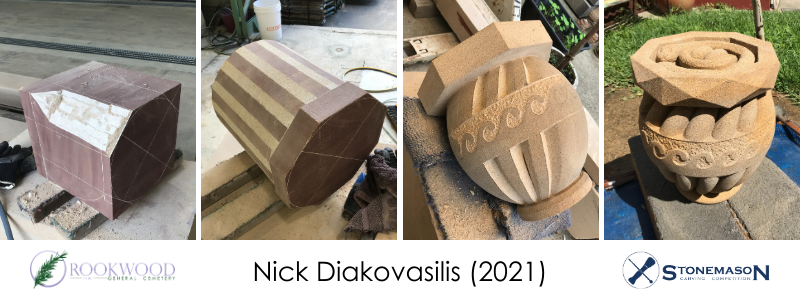
Nick Diakovasilis
Nick is a banker mason at Heritage Stoneworks (HSW). The entirety of his apprenticeship was carried out at HSW and is now working there as a mason. During his apprenticeship, he played the major role in carving an Aboriginal bark canoe for artist Joe Hurst. He has worked on Australian Museum, Sydney Hospital, and the National Art School to name a few of the projects he has served on the banker.
Having recently satisfied the graduate certificate in heritage conservation at USYD and he will continue on the research path to inform approaches to the craft.
About the work
I am curious about the extraction of stone and how it effects the pathways of water, above and below the ground.
Water is life, and the serpent is the creator in many places in Australia, which again is synonymous with water. The question is, what are we doing when we take or move stone?
The wave motif is an Ancient Greek style, representing my own ancestry. I decided to incorporate what we know as a fine sparrow peck behind the wave motif, for a nod to rock art techniques used by indigenous Australians for millennia. The people who know best about ecology, and the answer to my question of water and stone. The sparrow pecked reverse of the wave motif can also suggest balance as it follows the contours as the harmonic opposite (rough/smooth).
The helical rope around the bowl is demonstrating movement or flow, and the shape of the capital itself resembles that of a vessel or vase. The octagonal diamond abacus was mostly an aesthetic choice to add visual tension, and break from the roundness which dominates the bulk of the carving.
I used hand and pneumatic chisels throughout, no electric tools. After squaring the initial block and cutting it down to correct proportions, the capital has a grand total of ONE check out (or fillet), and the rest of the shaping is with the use of chamfers.

